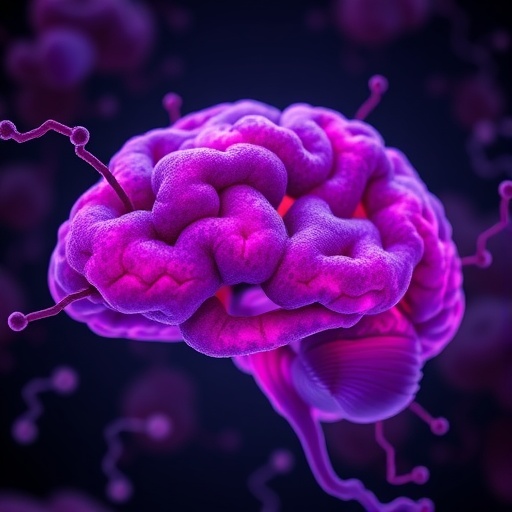In the intricate landscape of the human brain, microglia serve as the first line of defense and play critical roles not only in maintaining homeostasis but also in orchestrating responses to pathological changes. Recent research has illuminated the multifaceted roles of microglia, particularly in the context of neurodegenerative diseases such as Alzheimer’s. A key focus of this ongoing research is the immune-checkpoint molecule TIM-3, encoded by the gene HAVCR2, which has emerged as a significant player in microglial function.
An association between TIM-3 and late-onset Alzheimer’s disease has sparked interest in understanding its potential mechanisms. While previously known for its role in inducing T cell exhaustion, the function of TIM-3 in microglia remains inadequately characterized. This gap in knowledge calls for a deeper exploration of how TIM-3 modulates the behavior of microglial cells, particularly in relation to TGFβ signaling pathways that are pivotal for sustaining microglial health and function.
Recent findings have shown that TGFβ signaling is instrumental in driving the expression of TIM-3 in microglia. This regulatory mechanism highlights the interaction between different signaling pathways in the brain’s immune milieu. By harnessing mouse models, researchers have elucidated a novel interplay wherein TIM-3 interacts with proteins such as SMAD2 and TGFBR2, particularly through its carboxy-terminal tail. Such an interaction augments TGFβ signaling, promoting the phosphorylation of SMAD2, which is crucial for maintaining microglial homeostasis and function.
The consequences of TIM-3 deficiency in microglia have profound implications for understanding neurodegenerative processes. Investigations reveal that the genetic deletion of HAVCR2 leads to significant alterations in microglial activity; most notably, it enhances phagocytic activity. The resultant changes in gene expression profile align closely with features commonly associated with neurodegenerative microglia, known as MGnD or disease-associated microglia (DAM). The transition of microglia to this activated state signifies a shift in their roles from supportive guardians to potentially detrimental agents in neurodegenerative conditions.
Intriguingly, microglia-targeted deletion of HAVCR2 proves to ameliorate cognitive deficits observed in transgenic mouse models of Alzheimer’s, such as the 5×FAD mice. This suggests that TIM-3, while crucial for microglial homeostasis, may become a hindrance in the context of neurodegeneration. Hence, targeting TIM-3 could unveil new therapeutic avenues for mitigating Alzheimer’s pathology. The complexity of TIM-3 functions suggests that blind inhibition may disrupt other essential microglial pathways, and thus a carefully tailored approach is warranted.
Further unraveling the effects of TIM-3 deletion, researchers employed single-nucleus RNA sequencing to identify a distinct subpopulation of MGnD microglia in HAVCR2-deficient 5×FAD mice. This subpopulation is marked by an upregulation of pro-phagocytic and anti-inflammatory gene expression, coupled with a downregulation of pro-inflammatory markers. These findings not only reveal a shift but also a potential maladaptation in the microglial response that could be leveraged to mitigate Alzheimer’s disease progression.
Cross-referencing this data with single-cell RNA sequencing across other microglial clusters confirms a broader transcriptomic change in HAVCR2-deficient mice. The translational relevance of these findings cannot be overstated; they suggest that TIM-3 plays a more substantial role in maintaining the balance of microglial activation and inflammation than previously anticipated. This could indicate that microglial homeostasis is a finely tuned process, requiring TIM-3’s coordinating role to sustain healthy brain function.
The findings highlight the potential of TIM-3 as a therapeutic target for Alzheimer’s disease. By promoting a state of balanced microglial activity through the modulation of TIM-3, it may be possible to prevent the detrimental neuroinflammatory processes that characterize various neurodegenerative conditions. Future strategies could involve the development of TIM-3 inhibitors or modulators that can efficiently shift microglia from a state of inflammation back to homeostasis without compromising their essential roles in brain health.
As the field moves forward, it will be critical to unravel the nuanced roles of TIM-3 and similar immune-checkpoint molecules in microglial biology. The relationship between these molecules and other pathways such as TGFβ should be carefully examined, providing a more comprehensive view of the immune landscape in the brain. In doing so, we may unveil novel therapeutic strategies to intervene in neurodegenerative diseases and restore brain health.
In conclusion, the emerging role of TIM-3 in regulating microglial function reveals its duality as a mediator of homeostasis and a potential trigger of pathology in Alzheimer’s disease. Understanding these mechanisms holds promise for the development of innovative interventions that can alter the trajectory of neurodegenerative diseases. Continuous exploration and advancement in this field will undoubtedly pave the way to groundbreaking treatments that can improve cognitive function and overall well-being for individuals affected by Alzheimer’s.
Subject of Research: The role of TIM-3 in microglial function and its implications in Alzheimer’s disease.
Article Title: Immune checkpoint TIM-3 regulates microglia and Alzheimer’s disease.
Article References:
Kimura, K., Subramanian, A., Yin, Z. et al. Immune checkpoint TIM-3 regulates microglia and Alzheimer’s disease.
Nature (2025). https://doi.org/10.1038/s41586-025-08852-z
Image Credits: AI Generated
DOI: 10.1038/s41586-025-08852-z
Keywords: TIM-3, microglia, Alzheimer’s disease, TGFβ signaling, phagocytic activity, neuroinflammation, neurodegeneration, MGnD, disease-associated microglia, cognitive impairment.
Tags: Alzheimer’s disease immune regulationHAVCR2 gene functionsimmune-checkpoint molecules in neurodegenerationmicroglial function in neurodegenerationmicroglial homeostasis in Alzheimer’smouse models in Alzheimer’s studiesneuroinflammation in Alzheimer’s researchTGFBR2 protein interactionsTGFβ signaling pathways in brain healthTIM-3 and T cell exhaustionTIM-3 interactions with SMAD2TIM-3 role in microglia





